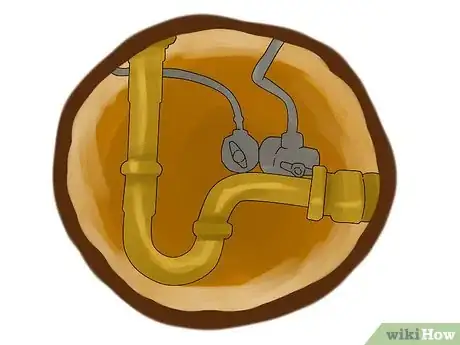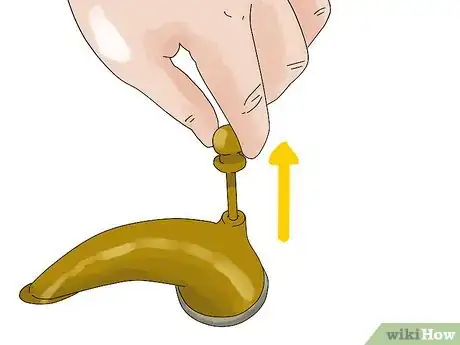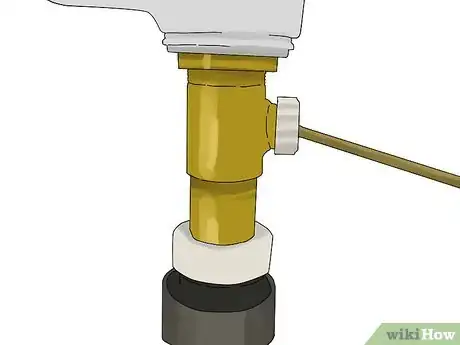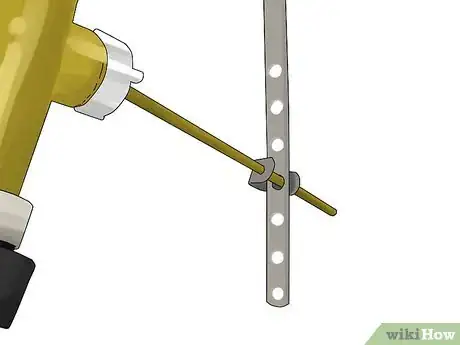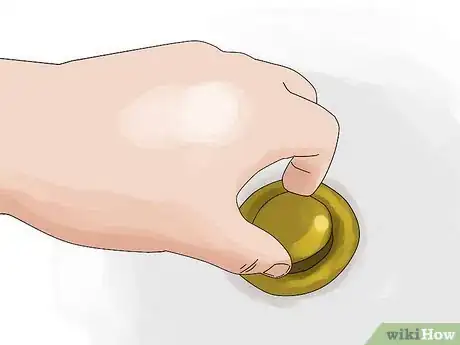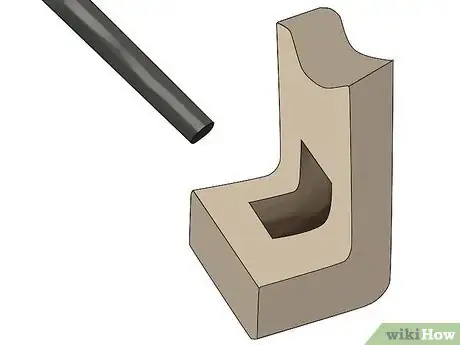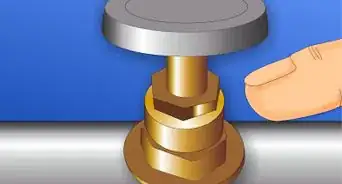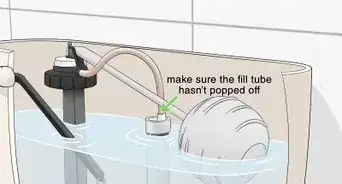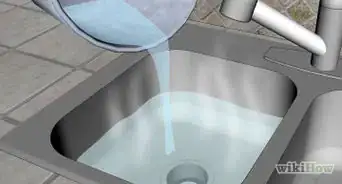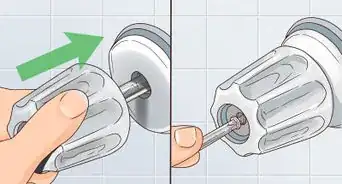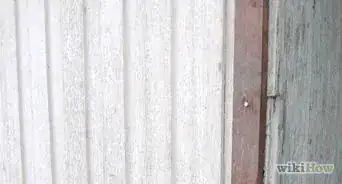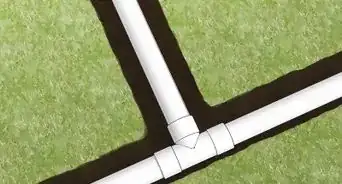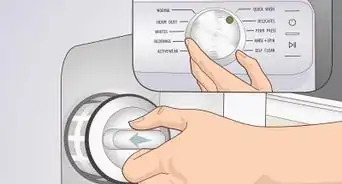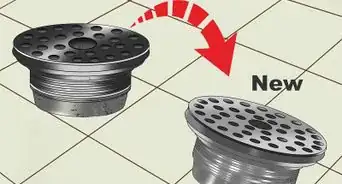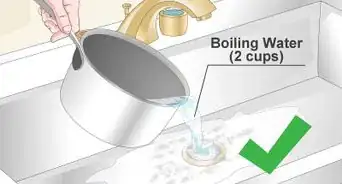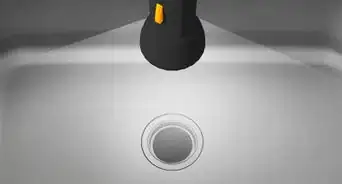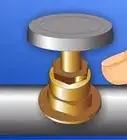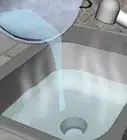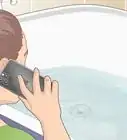X
wikiHow is a “wiki,” similar to Wikipedia, which means that many of our articles are co-written by multiple authors. To create this article, 18 people, some anonymous, worked to edit and improve it over time.
This article has been viewed 156,041 times.
Learn more...
Chances are you don't spend much time thinking about the little rod that opens and closes your drain — until it fails to work. Fortunately, there is no rocket science happening under your sink, just a couple of simple rods that hook together to push the stopper up and down. They're pretty easy to adjust if you know what you're looking for.
Steps
-
1Understand a bit of what's going on under your sink.[1] When you pull up on the drain rod (1), it pulls up on another rod (3) that's under your sink, behind the drain. This rod passes through a ball joint (5) and hooks into a notch (6) in the bottom of your drain stopper (7).
- You can move the rod from below the sink to see the mechanism operate, or ask somebody to move the rod from above while you watch from below if you need to learn which one it is.
-
2Push and pull the rod. Notice whether the drain stopper moves. If it does, but it doesn't stay where you put it, tighten the nut. If the drain stopper doesn't move with the rod, or if the motion doesn't seem to be related (you pull the rod and the drain stopper only wiggles), then something is probably disconnected.Advertisement
-
3Adjust the nut.[2] On the back of the drainpipe, there is a nut. It may have tabs for hand-tightening or it may require a wrench. The nut in this picture (shown at 4 in the diagram above) controls how stiff the mechanism is. If the stopper moves as it should but doesn't stay put, all you need to do is tighten the nut (turn it clockwise). If the action is too stiff, loosen the nut a little. Check the action and adjust until it feels about right.
-
4Make sure the two rods are connected.[3] If the stopper isn't moving or isn't moving much, this is the first thing to check. There's usually a simple screw and nut connection at the joint. If it's missing or disconnected, connect it. Remember that this joint needs to move, though, so connect it loosely enough that the joint will act as a hinge.
- Use a clip such as the one shown in the photo to attach the two rods securely together while leaving them free to move.
-
5Attach the stopper to the lower rod.[4] Pull up on the stopper with your fingers. It should not come out. If it does, or if it's not moving when the lower rod moves, you'll need to attach it.
- Take a look at the stopper. You will see something looking like a hook with a notch in the middle.
- Look into the drain. You'll see the lower rod protruding from the back of the drain. Your object is to get the notch hooked onto the lower rod.
- Hold the stopper so that the notch is at a right angle to the lower rod. Notice which way you point the hook.
- Lower the stopper into the drain. Push it in far enough that the lower part of the hook is just past the rod. Feel your way to this point, and use the rod to move the lower rod to help yourself find it.
- Rotate the stopper 90 degrees so that the hook pops around the lower rod and the tip of the rod ends up in the notch. This maneuver may take a few tries, but don't give up.
-
6Adjust the location of the lower rod.'[5] If you have trouble getting the hook over the rod so that it's in the notch, or if nothing you do seems to engage the stopper with the lower rod, the rod itself may be in the wrong place. Remove the stopper and look in the drain. The rod should extend between half and three-quarters of the way into the drain pipe.
- To adjust the distance the lower rod extends into the drain pipe, loosen the nut. Push the rod in further or carefully pull it out a bit. Try not to pull it all the way out. When it is where you want it, tighten the nut down again until the action is stiff enough.
-
7Adjust the travel of the lower rod. You may find that the lower rod goes too far up or down. Move the clip at joint (2) up or down, in or out.
- Change how high up the lower rod attaches to the upper rod. You may see a series of holes on the upper rod. Move the lower rod to a higher hole if you'd like the stopper to be lower down in the drain. Move the lower rod to a lower hole if you'd like the stopper higher up.
- Change how far back on the lower rod the upper rod is attached. This choice may not be built in, but you can make the overall travel of the stopper greater by attaching the upper rod further away from the ball joint. Conversely, you can lessen the travel of the stopper by attaching the upper rod closer to the ball joint.
Advertisement
Warnings
- Make sure not to hit your head on the cabinet as you climb out from under the sink.⧼thumbs_response⧽
Advertisement
References
About This Article
Advertisement
